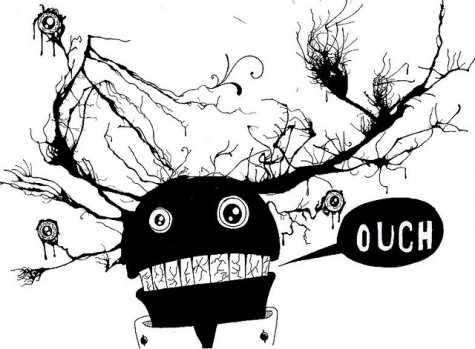“There are monsters in my mind,” my daughter said at bedtime.
“Oh, honey,” I said. “Monsters don’t exist.”
She glared at me. “Yes, they do.”
I sighed. “Have you ever heard of allometric scaling?”
Well, it didn’t go exactly like that.
Last month, I wrote about Tom Painter, a snow scientist who occasionally advises Hollywood on the thermodynamics of fairies and princesses. What a cool gig: He uses science to make fantasy more believable. But my gig, as a parent, is often to make fantasy less believable. And let me tell you, science is not a huge help in this department. Despite peer-reviewed research to the contrary, my five-year-old continues to believe that vegetables are not needed for growth, sleep is not needed for play, and that crying is the best way to find lost shoes.
But she does admit that science is quite good at killing monsters.
We recently inherited a delightful little book called Just the Right Size: Why Big Animals are Big and Little Animals are Little, written by zoologist Nicola Davies and illustrated by Neal Layton. Davies describes what she calls the Little Thing, Big Thing Rule: “If you DOUBLE the length of something, its surface area and cross section go up FOUR times, while its volume and weight go up EIGHT times!” This sounded vaguely familiar from my college biology classes, and slowly I realized why. I was reading my daughter a kindergarten-level version of the 1926 J.B.S. Haldane essay “On Being the Right Size.”
“For every type of animal there is a most convenient size, and a large change in size inevitably carries with it a change of form,” Haldane writes, and elaborates with elegant descriptions of the advantages and disadvantages of animals’ various physical sizes. Small animals can fall without fear, but large animals find it easier to keep warm. Small animals can lift many times their own body weight, but large animals are relative weaklings. All because of what Davies calls the Little Thing, Big Thing Rule, what mathematicians call the square-cube law, and what biologists know as an example of allometric scaling: as an object increases in size, its volume increases much faster than its surface area.
Both Davies and Haldane point out that the Little Thing, Big Thing Rule is particularly useful for slaying monsters. Haldane recalls that the monsters Giant Pope and Giant Pagan, characters in the Christian allegory The Pilgrim’s Progress, are described ten times the size of the hero, meaning that they were ten times as tall, wide, and thick—in other words, a thousand times heavier. Their thigh bones, however, must have been only ten times as thick as their adversary’s, likely to crack like toothpicks under their bodies’ enormous bulk.
“This was doubtless why they were sitting down in the picture I remember,” Haldane notes. Sitting-down monsters aren’t nearly as scary as the standing-up kind—not to mention the running-around kind.
So here’s how that bedtime conversation really went:
“There are monsters in my mind,” my daughter said.
“Oh, honey,” I said. “Monsters don’t exist.”
“Yes, they do.”
“Well, even if they did, remember the Little Thing, Big Thing rule?”
She nodded.
“So you know that if a big monster tried to run after you, its legs would break off?”
Silence. Then, another slow nod. And after a very few minutes, sweet dreams.
Don’t you dare tell her about the zombies.
Pained monster, presumably with its legs breaking off, drawn by Flickr user Autumn_Bliss. Creative Commons.

More of Haldane’s writing: “You can drop a mouse down a thousand-yard mine shaft; and, on arriving at the bottom, it gets a slight shock and walks away, provided that the ground is fairly soft. A rat is killed, a man is broken, a horse splashes.”
It’s a beautiful essay, really. And just a footnote to a fascinating life: http://en.wikipedia.org/wiki/J._B._S._Haldane
Hi there,
as an ecologist who has worked on allometry for years I couldn’t let this stand without a reference to the famous early seventies paper:
THE POPULATION DENSITY OF MONSTERS IN LOCH NESS
R.W. Sheldon and S.R. Kerr
http://aslo.org/lo/toc/vol_17/issue_5/0796.pdf
although this also falls in the “science making fantasy more believable” category 🙂